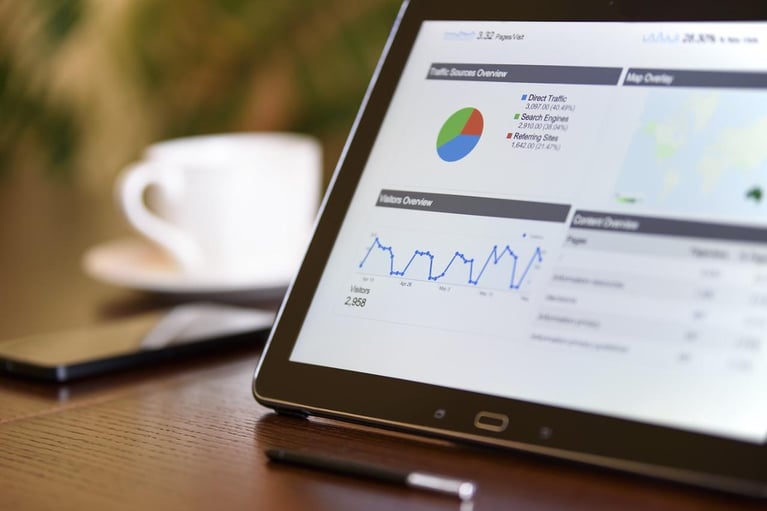Digital ad spending in the U.S. is forecast to top $244 billion in 2023, accounting for nearly 72% of all advertising categories. It’s a significant expense, so you should be optimizing your campaigns for peak performance.
Measuring the Return on Ad Spend (ROAS) is one of the most important marketing metrics to check whether your advertising efforts are working effectively. Since cost per acquisition (CPA) is one of the biggest expenses for many sellers, managing your ROAS and conversion rates is critical to success.
ROAS helps you determine whether campaigns, platforms, channels and strategies are meeting your goals. Without measurement, it’s too easy to waste your precious ad dollars. One study estimated that advertisers are wasting more than $94 million per quarter due to a combination of poor ad targeting, ad placement and improper attribution.
What Is a Good ROAS?
A good ROAS will vary depending on the industry, the products or services, and the profit margins you need to operate efficiently. A four-to-one return is a good rule of thumb for most industries, but some businesses need to have a higher ratio to meet their financial goals. Others may be able to justify the cost per conversion at a lower target ROAS.
What Is the ROAS Formula?
ROAS is expressed as a ratio of revenue compared to advertising expenses.
ROAS = (Revenue attributed to ads / costs of ads)
For example, if you earned $10,000 from your advertising and your advertising costs were $2,500, your ROAS would be $10,000 / $2,500 = 4. In this example, it would show a 4:1 return on investment. In other words, you’re gaining $4 for every $1 you spend on ads. ROAS is also sometimes expressed as a percentage. In this case, the percentage would be 400%.
Things To Consider for Your ROAS Calculation
ROAS can also vary depending on a wide variety of factors, including your advertising budget, how and where you advertise, and the quality of your marketing campaign. A low-quality ad is likely to produce poor ROAS no matter how much you spend.
When evaluating your ROAS calculation, you should also consider:
- Conversion tracking: You need a reliable way to track conversion across various channels and touchpoints.
- Revenue attribution: There are different models for assessing attribution, discussed below.
- Timeframes: You can set whatever timeframe you want to track ROAS. You may want to set short timeframes for limited campaigns.
- Profitability: A good ROAS doesn’t necessarily mean a good profit margin. You need to examine ROAS in terms of the cost of goods sold (COGS) and any other expenses, such as processing and fulfillment costs.
- Benchmarking: It’s always a good idea to benchmark your ROAS against industry competitors to set realistic goals.
5 Ways To Reduce Your Advertising Costs and Improve ROAS
Whether you’re buying Google Ads or other digital advertising, your goal is to maximize your return while minimizing your costs. We have five ways you can better manage your marketing effort to reduce costs and improve ROAS.
1. Choose the Right Bidding Strategy
One of the more challenging aspects of digital marketing is choosing the right bidding strategy. There are several models to choose from, including:
- Cost per click (CPC): pay whenever someone clicks on your ad
- Cost per thousand (CPM): pay for every thousand impressions
- Cost per action (CPA): pay when someone takes a specific action, such as conversion
Depending on your goals and marketing strategy, other options exist. For example, you can budget for a share of voice, such as ensuring your ads run 50% to 100% of the time someone searches for particular keywords. Google recommends you allocate your marketing based on your business and campaign goals.
| BUSINESS GOAL |
CAMPAIGN GOAL |
BIDDING STRATEGY |
| Increase sales or leads |
Maximize conversions on a fixed budget or fixed ROAS |
Target ROAS bidding |
| Increase transactions of leads |
Maximize conversion on a fixed budget or fixed cost per action |
Target CPA bidding |
| Increase site visitors |
Get as many clicks as possible within your ad budget |
Cost per click |
| Build brand awareness |
Improve position on search results, show at desired locations |
Target impression share |
2. Optimize Your Landing Pages
Unfortunately, many companies spend their ad dollars without optimizing their landing pages. Once your ad drives traffic to your e-commerce store, where they go on your website is critical to conversions.
You will want to optimize your landing pages for conversions. Best practices include:
- Keep your landing page simple. Make it easy for visitors to see key points and make decisions.
- Have a clear call to action (CTA) that tells visitors what you want them to do: buy now, sign up for a newsletter or another desired action.
- Ensure CTAs are above the fold so visitors don’t have to hunt for them.
- Showcase any product features in ads.
- Add contact information for questions.
- Be consistent with your brand messaging, colors, schemes, etc.
- Tie landing pages directly to the products or services you are advertising.
- Use A/B testing to optimize ad copy and landing page content.
3. Adjust Your Keyword Targeting
Regularly review your keyword targeting. Customer behavior and search patterns change constantly, so what might be a great keyword today might not perform as well tomorrow. You are also in competition with others for keywords, so you need to make sure you’re getting the performance you need.
High-quality keywords that drive qualified traffic and lead to conversions are the goal, but a lot of money can be spent on keywords that don’t perform well.
Best practices include:
- Think about how your customer would phrase things when searching.
Example: “leather jacket” rather than “outdoor apparel” - Use specific terms rather than general terms.
Example: “accounting software” rather than “software” - Target multiple keywords on the same topic.
Example: "hiking boots" and "best hiking boots" - Use negative keywords.
Example: Add "used" to the negative keyword list if you sell only new products.
You should also consider long-tail keywords. Long-tail keywords have lower search volume, equaling lower competition, but often have a higher ROAS.
4. Research the Approach of Your Competitors
Keep an eye on what your competitors are doing. Analyze the keywords, ad campaigns and targeting methods they use. This can help you uncover opportunities you might otherwise miss.
When you see your competitors make changes to their strategy, such as price reductions or sales, it’s important to see the impact that has on your ad spending to see if a similar strategy would work for you and whether you need to react.
5. Utilize Multi-Touch Attribution to Better Understand the Customer Journey
The customer journey today rarely contains a single touchpoint. Before someone makes a purchase, they likely encounter multiple touchpoints. They may have first become aware of your brand, product or service. They may have visited your website and done some research. Maybe they saw an email or clicked on a link in your email newsletter.
Finding out what each touchpoint contributes to the conversion is important to assign credit and eliminate waste. When you know which channels and which touchpoints provide the highest return, you can allocate your budgets more efficiently.
Best practices for multi-touch attribution include:
- A clear understanding of the customer journey and the various touchpoints
- Measurement of each touchpoint within the customer journey
- The right attribution model to accurately measure performance
Determining what led to a sale can be tricky. Was it your great ad campaign, your brand reputation or different touchpoints of your overall marketing? Multi-touch attribution helps you measure the impact of touchpoints using multiple attribution models:
- First-touch attribution assigns credit to the first touchpoint with your brand, products or services.
- Last-touch attribution assigns credit to the last touchpoint before conversion.
- Last non-direct click attribution assigns credit to the last touchpoint before conversion, excepting your website.
- Linear attribution assigns credit evenly across each touchpoint.
- Time-decay attribution assigns credit by putting more weight on the first and last touchpoint.
How Attribution Software Can Improve Your ROAS
Marketing attribution software can help you evaluate the performance of various touchpoints that influence the effectiveness of your advertising spending. Attribution software provides a more accurate view of the customer journey and what contributes to conversions. With data-driven insights, you can spend more efficiently to improve your ROAS.
You can also improve your overall marketing. Attribution software will identify touchpoints beyond your ad channels to identify which marketing efforts generated the most engagement and conversions.
You also get deeper insights into your digital marketing channels. Cross-channel insights can help you better understand how channels work together to drive conversions. For example, someone might see an ad via search and do research on your website but not make a purchase until they see an ad on social media. When you understand the role each touchpoint played across channels, you can focus your cross-channel marketing strategies better to optimize ROAS.
Cart.com’s Unified Analytics is a suite of tools to connect data from across shopper journeys to provide valuable insights and validate recommendations. The Unified Analytics multi-touch attribution model captures real-time data and tracks customer paths to help you understand a holistic view of the buyer journey for better targeting and return on investment.
See how Cart.com can help improve your ROAS. Contact our sales team today.
Subscribe to our emails for the latest industry insights!
By entering your email, you agree to receive marketing emails from Cart.com





